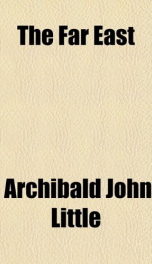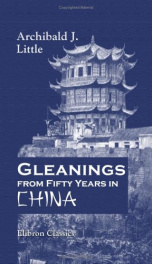the far east

Purchase of this book includes free trial access to www.million-books.com where you can read more than a million books for free. This is an OCR edition with typos. Excerpt from book: CHAPTER II THE CENTRAL KINGDOM : CHINA When China is spoken of, that portion known as the ' Eighteen Provinces1,' and inhabited by the pure Chinese race, is usually understood. This, the integral part of the Chinese Fig. 4.Area of China and the British Isles. Empire, and so called ' China proper,' extends from Hainan and Canton in the tropical south to Peking and the 'Great Wall' in the frozen north; from the wide alluvial delta round Shanghai on the Pacific Ocean in the east to Szechuan and Yunnan, embracing 1 The Chinese still speak of China colloquially as the ' Eighteen Provinces' (Shih-pa she'ng), but recently Manchuria and Turkestan have both been directly incorporated: the former as the ' Tung san she'ng' or Three Eastern Provinces, the latter as the Shin Kiang or ' New Dominion.' Thus China is now officially known as the ' Er-shih er sheng' or Twenty-two Provinces. Mongols [ Aryans.; the high border-land of Tibet in the westan area of one and a half million square miles, or seventeen times that of the island of Britain, inhabited by a population estimated at ten times the number of the inhabitants of our own country. But beyond and surrounding this central region, lie the outlying dependencies Manchuria, Mongolia, Turkestan, and Tibet, together aggregating double the area of China proper, to which (except in proportion) they bear much the same relation as do our own colonies and dependencies to their mother country : indeed, the affinity in the relation of China to her dependencies and that of Britain to her colonies is very marked when compared with those of other European countries to their coloniesin the one bottom fact that neither derives any direct pecuniary benefit from the relation; the obligation, if any, being on the side of the depe...
Info about the book
Author:
Series:
Unknown
ASIN:
B005I4LLKQ
Rating:
4.5/5 (4)Your rating:
0/5
Languge:
English
Users who have this book
Users who want this book
What readers are saying
What do you think? Write your own comment on this book!
write a commentGenre
if you like the far east try:
Do you want to read a book that interests you? It’s EASY!
Create an account and send a request for reading to other users on the Webpage of the book!




